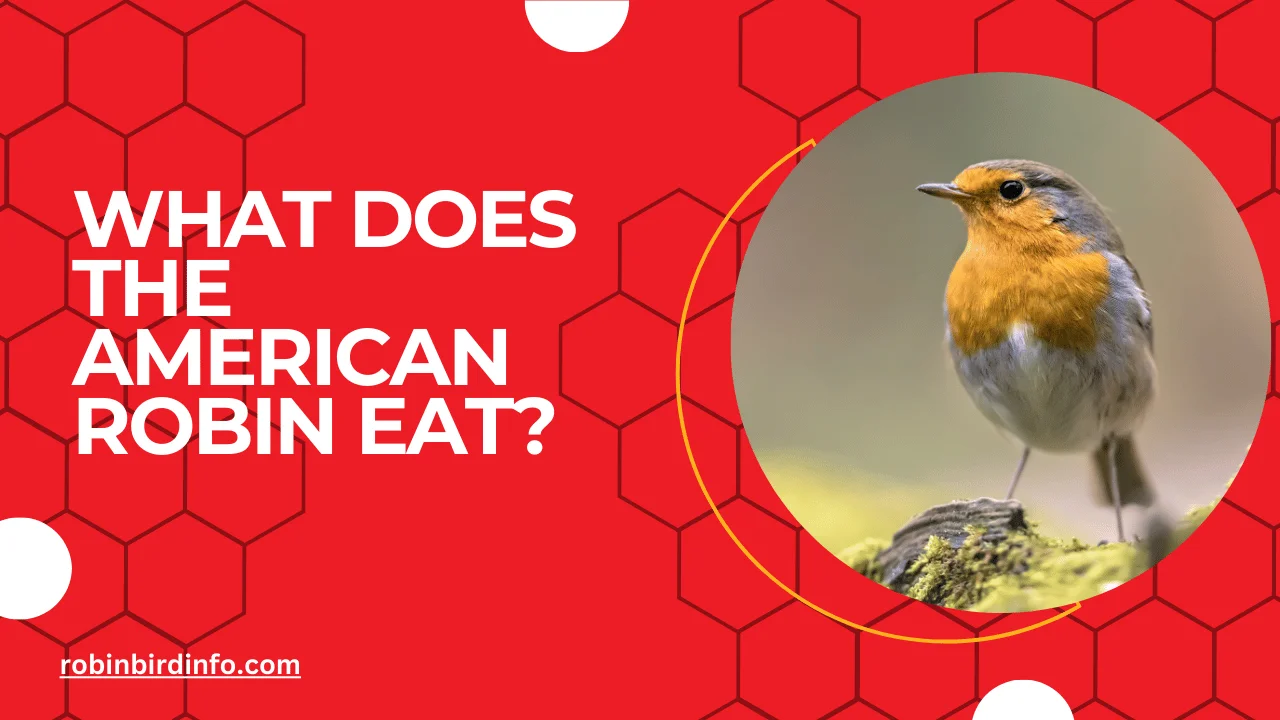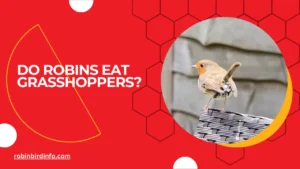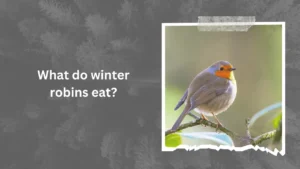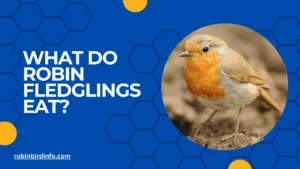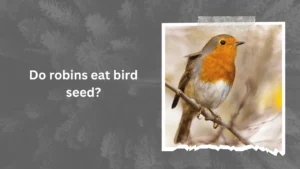Have you ever watched a Robin hop across your lawn, its head cocked inquisitively as it pecks at the ground?
These familiar birds bring a cheerful melody to our backyards, but their dietary habits might surprise you. Forget the stereotype of the worm-eating early bird – Robins are actually omnivores with a surprisingly diverse palate!
Understanding what Robins eat is not just fascinating, it’s also crucial for creating a bird-friendly haven in your own backyard. By offering the right food sources, you can attract these cheerful residents and contribute to a healthy ecosystem.
In this blog post, we’ll delve into the fascinating world of Robin cuisine. We’ll explore everything from the juicy insects they devour to the plump berries they favor, revealing the secrets behind their seasonal preferences and foraging strategies.
So, grab a metaphorical birdseed bag and get ready to discover the hidden world of the American Robin’s diet!
Contents
Section 1: Diet Composition
Invertebrates: A significant portion of a Robin’s diet consists of invertebrates, particularly during the breeding season. They relish insects, such as beetles, caterpillars, and crickets, as well as worms and spiders. These protein-rich foods are essential for the growth and development of their young.
Fruits and Berries: As the seasons change, so does the Robin’s diet. In the fall and winter, fruits and berries become a staple food source. They are particularly fond of berries, like dogwood, juniper, and crabapple, as well as fruits such as mulberries and cherries.
Other Food Sources: While less common, Robins may also consume other food items, such as seeds and nuts. These can be a valuable source of energy, especially during harsh winter conditions.
Section 2: Foraging Behavior
Ground Foraging: Robins are adept at foraging on the ground. They use their sharp beaks to probe the soil and leaf litter in search of insects and worms. Their keen eyesight helps them spot potential prey from a distance.
Aerial Foraging: In addition to ground foraging, Robins are skilled aerialists. They can hover in mid-air to catch flying insects, such as flies and mosquitoes.
Social Foraging: Robins are often seen foraging in flocks, particularly during migration or in areas with abundant food resources. This social behavior can enhance foraging efficiency and provide protection from predators.
Section 3: Seasonal Variation in Diet
Breeding Season Diet: During the breeding season, Robins require a diet rich in protein to support the growth and development of their young. They rely heavily on insects to feed their nestlings.
Winter Diet: In winter, when insect populations decline, Robins switch to a more fruit-based diet. They consume fruits and berries from various plants, including holly, crabapple, and dogwood.
Migration and Diet: Migrating Robins need to fuel their long-distance journeys. They rely on a combination of insects, fruits, and berries to provide the necessary energy.
Section 4: The Role of Robins in Ecosystems
Seed Dispersal: By consuming fruits and berries, Robins play a crucial role in seed dispersal. They ingest seeds and later excrete them in their droppings, which can help plants to colonize new areas.
Insect Control: Robins are effective predators of insects, particularly during the breeding season. By consuming large quantities of insects, they help to control pest populations and maintain ecological balance.
Section 5: Conservation Implications
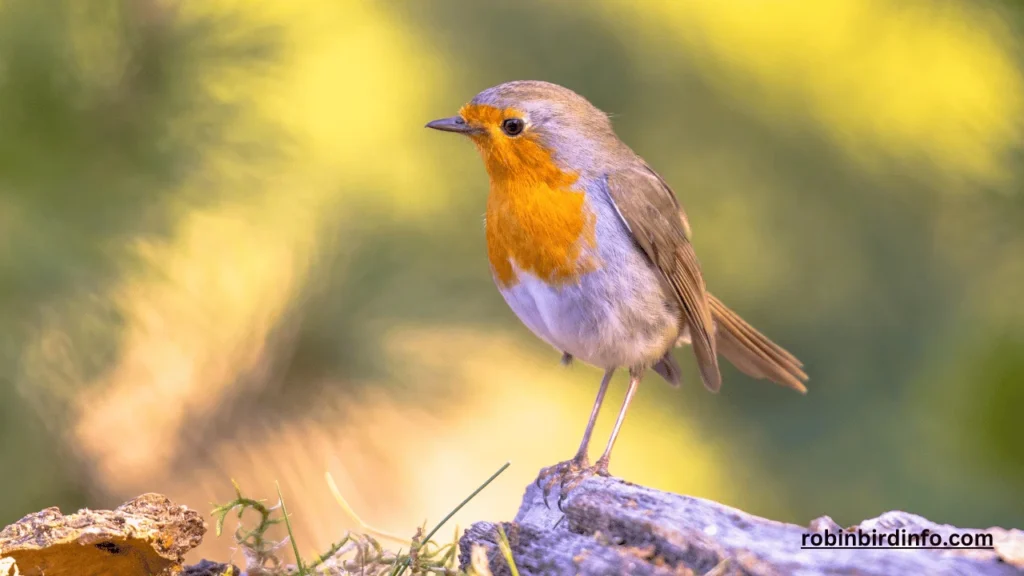
Habitat Loss and Fragmentation: Habitat loss and fragmentation can negatively impact Robin populations by reducing the availability of food and nesting sites.
Pesticide Use: The widespread use of pesticides can harm Robin populations by reducing the availability of insect prey and directly poisoning birds.
Conservation Strategies: To protect Robin populations, it is important to conserve their habitats, reduce pesticide use, and create bird-friendly landscapes. By providing food and water sources, and by avoiding the use of harmful chemicals, we can help ensure the survival of these beloved birds.
Conclusion
The American Robin’s diet is diverse and adaptable, allowing them to thrive in various environments.
By understanding their dietary needs and the role they play in ecosystems, we can appreciate these birds even more and take steps to protect them. By creating bird-friendly habitats and reducing the use of harmful chemicals, we can help ensure the continued survival of these iconic birds.
FAQ’s
What do baby Robins eat?
Baby Robins are primarily fed a diet of insects, such as caterpillars, worms, and beetles. Their parents work tirelessly to provide a steady supply of protein-rich food for their growing young.
Do Robins eat seeds?
While Robins primarily consume insects and fruits, they may also eat seeds, especially during the winter months when other food sources are scarce.
What do Robins drink?
Robins primarily obtain water from the food they eat, such as juicy fruits and insects. However, they may also drink water from puddles, birdbaths, or other water sources.
Do Robins eat suet?
Robins are not typically attracted to suet, as it is a high-fat food that is more commonly consumed by woodpeckers and other birds.
How do Robins find food in the winter?
In the winter, Robins rely on fruits and berries as their primary food source. They may also forage for insects, particularly in milder climates.
Can Robins eat bread?
While Robins may eat bread crumbs, it is not a natural part of their diet and should not be a primary food source. It is best to provide them with natural foods like fruits, berries, and insects.

